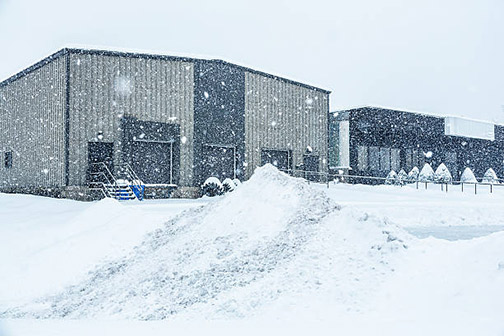
Commercial plumbing systems have unique features that make them harder to prepare for winter than residential systems. Because they span wide expanses of space, Spectrum Property Management notes that they carry enormous amounts of water and wastewater daily. This means there are several opportunities for frozen pipes and drainage issues to happen in the system during winter.
A single point of failure in a commercial plumbing system can have disastrous effects on the operations of the businesses occupying the building. For malls, restaurants, and businesses that rely heavily on holiday season sales, the impact is even worse. This is why, as winter approaches, it is vital to protect your plumbing system from such problems.
Fixing common winter drainage issues in commercial plumbing
Drain clogs and blockages: These are common in high-traffic areas like restrooms. Drain clogs are also a major concern for businesses that welcome more visitors, such as commercial kitchens. The causes of clogs in commercial drainage systems vary. Three common ones are:
Commercial kitchen clogs: These mostly happen as a result of fats, oils, and grease being allowed to enter or directly dumped into the drainage systems. Fats, oils, and grease (or FOGs) cause stubborn clogs that damage not only commercial plumbing systems but also municipal sewer lines.
Restroom clogs: Commercial drainage systems are highly susceptible to these types of clogs due to the number of visitors they receive and the high probability that these visitors will flush non-flushable items into the toilets. These items can later obstruct the drain pipes.
Hair and soap scum: Build-up of soap scum, hair, and other sediments in bathroom drains. Bathrooms are another high-traffic area in commercial buildings, which also predisposes these pipes to clogs and blockages.
How can you prevent these problems in your commercial building?
- Educate visitors and staff: By posting the guidelines on the proper use of the building’s drains in a prominent place, you can reduce the amount of abuse visitors and staff subject the system to.
- Provide trash cans: Position trash cans in strategic locations around the kitchen and restroom to encourage proper disposal of FOGs and non-flushable items.
- Install drain strainers: To reduce the amount of hair, soap residue, and other debris that enter the drainage system, install strainers on drain openings.
- Professional drain cleaning: Before the full onset of winter, have the drainage system in your commercial building cleaned to remove debris buildup.
Frozen and burst pipes
Low temperatures at this time of the year also subject drainage systems to a different kind of problem, or they can worsen the other problems discussed above.
Congealed FOGs
Due to overall lower temperatures, fats, oils, and grease congeal faster, subjecting drains to an even greater risk of clogging. This is a huge problem for buildings with commercial kitchens.
Sewage backup
Frozen sections in the drainage pipes that connect to the building’s sewer line can cause sewage backup inside the building. If this problem is allowed to happen, the damage to businesses’ sales and reputation may be irreparable.
Brittle and cracked drainpipes
Due to exposure to cold, exposed drainage lines or drainage pipes that are not buried deep enough can become brittle and crack. This will result in wastewater or even raw sewage leaking into the surrounding areas.
Tips to fix or prevent these problems
- Inspect the drainage system
Before winter, a detailed assessment of the drainage system can reveal potential hotspots for clogs, blockages, and frozen pipes. If a pipe is installed above the frost line, ensure it has enough slope to prevent freezing.
- Use the right material
Ideally, only short sections of drainage pipes can be installed in locations where they will be exposed to winter temperatures. If possible, use flexible pipe materials for these short runs to make the pipe better able to withstand ground movement.
- Maintain grease traps
Well-maintained grease traps reduce the likelihood that grease will enter drainpipes and sewer lines. If there is a commercial kitchen within the premises, cleaning the grease trap before winter will protect the drainage system.
- Create a proactive drain maintenance plan
The most effective way to prevent drainage problems in your commercial plumbing is by taking steps to optimize water flow. To achieve this, you should clean the entire drainage system professionally, using hydrojetting or sewer rodding.
- Hydro jetting: This method has the distinct advantage of being able to dislodge the debris inside drainage pipes and flush loose debris out of the system. Because it uses high-pressure water, hydro jetting is the best drain cleaning method for optimizing flow.
- Sewer rodding: Sewer rodding is the preferred method when dealing with blockages caused by flushing paper items into the drains. Sewer rodding is also effective for older drainpipes that may not be able to withstand the pressure of hydro jetting.
If you are concerned about the efficiency of your commercial drainage systems this winter, the above methods will solve the problem.

